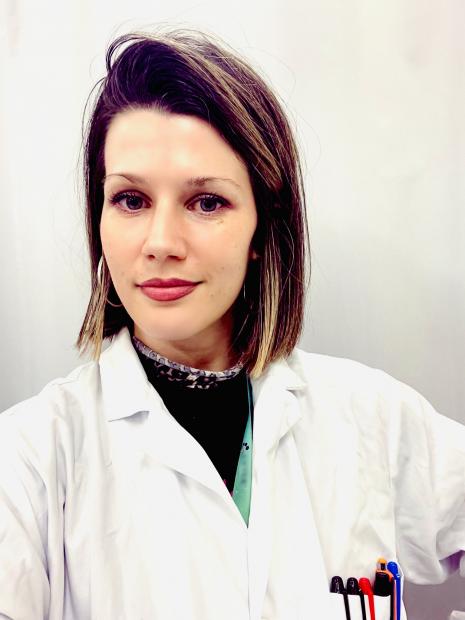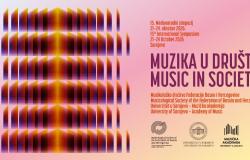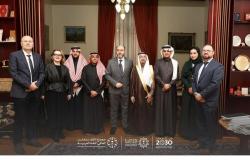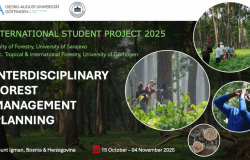Dr. Mia Stanić, a graduate of the University of Sarajevo, is a member of the research team that has made a groundbreaking discovery in understanding the mechanisms of human DNA repair

Researchers at the University of Toronto have recently made a significant breakthrough in understanding the mechanisms of human DNA repair, which could revolutionize medical approaches, particularly in the fight against cancer and premature aging. This research was supported by the Canadian Institutes for Health Research, the Royal Society of Canada, the University of Toronto, and Princess Margaret Hospital (University Health Network).
Among the prominent members of the research team isDr. Mia Stanić, a Bosnian-Herzegovinian researcher who has made a significant contribution to this important step.
We spoke with Dr. Mia Stanić about her academic journey from the University of Sarajevo to her research engagement at the University of Toronto, and about her recent discovery of DNA repair mechanisms, as well as its significance for medical research and treatment.
- Can you describe your journey from studying at the University of Sarajevo to your current research engagement at the University of Toronto? Did you graduate from the Faculty of Natural Sciences and Mathematics at the University of Sarajevo?
I graduated from the Department of Biology at the Faculty of Natural Sciences and Mathematics at the University of Sarajevo, and I am very proud of that. The Faculty of Natural Sciences and Mathematics is a renowned institution that provides students with a broad and solid education. Throughout my academic and professional career, people have been fascinated by the wide range of knowledge I have acquired. I think that's why global trends in education are moving towards specialization, while educational institutions in our region are still providing a solid foundation.
During my master's studies, I worked on my master's thesis at the Institute for Genetic Engineering and Biotechnology at the University of Sarajevo. This experience also introduced me to scientific research. After completing my master's degree, I went to Germany to pursue my Ph.D. at Heidelberg University, where I also worked as a research fellow at the Virology Institute at the Clinical Center of the University. After completing my Ph.D., I was appointed as a postdoctoral research fellow at the University of Toronto and began working on a project that we recently published in Nature Structural and Molecular Biology.
- What is this discovery about human DNA repair, and how significant is it for medical research and treatment?
Our discovery represents a new understanding of DNA repair mechanisms, which are particularly relevant for a wide range of pathological conditions. In other words, our results define key molecular players involved in this process and show that their presence is a prerequisite for determining the clinical picture of various types of cancer and premature aging syndromes. Our results provide a significant foundation for potential future applications.
- What do you see as the future applications of this discovery in medicine?
We believe that our study will set a precedent and serve as an inspiration to other researchers to be open to new ideas, concepts, and ways of thinking. Flexibility and openness were crucial factors that led to this fundamental discovery.
- Can you tell us more about your role in the research team and how you feel about your contribution to this discovery that could have a deep and lasting impact on medical practice and treatment worldwide?
As the only postdoctoral research fellow among the first three authors of the study, I had extensive experience in scientific research and was heavily involved in leading this study. My role also included mentoring and guiding younger team members who were working on this project for the first time.
Personally, I am very proud of our results and hope that they will help promote excellent researchers who are working in Bosnia-Herzegovina. Professionally, I hope that our study will provide a solid foundation for future revolutionary discoveries in this field.
- How has your education at the University of Sarajevo influenced your career in medical research?
I am very proud and grateful for my education at the University of Sarajevo. Through this experience, I would like to thank all my professors and mentors who have been a great source of inspiration and have significantly contributed to my academic and professional journey. They always provided me with selfless support and guidance, serving as role models in their field, but also as good people.
- What message or advice would you like to share with students at the University of Sarajevo?
I would like to encourage them to be brave and pursue their goals with confidence. They should not doubt themselves and view potential obstacles as opportunities for growth and improvement. What is perhaps most important is that they remain open-minded and flexible. It was precisely this openness to new perspectives that ultimately led to this fundamental discovery.







